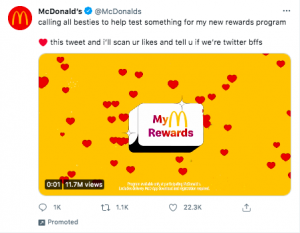— January 12, 2019

Free-Photos / Pixabay
When you’re selling subscription services, how do you measure customer success? Most subscription-based enterprises look at “churn rates,” or the percentage of customers who cancel their subscription every year. It’s a simple way to check out the health of your business, and see if you’re meeting your growth goals. And if you’re operating in the highly competitive subscription-based B2B industry, it’s an especially important number.
Average churn rates for subscription services are estimated at around 6-8%. So, one way to become more competitive is to get your churn rate down below this figure. But how can you learn why customers end their subscriptions, and understand the calculations behind your current churn rate? Let’s take a closer look at how churn rates are calculated, how to lower yours, and how to dominate your corner of the subscription-based market with customer-centric strategies.
3 Churn Rate Calculations—and What They Can Tell Your Subscription-Based Business
If your churn rate is higher than the industry average, the obvious question is, “Why are people canceling their subscriptions to our service?” There are three types of churn rates that can help answer that question. First are subscription churn rates.
Subscription Churn Rates
Your subscription churn rate is the percentage of customers who cancel their subscription to your services within a certain time period. To calculate subscription churn rate, divide the number of lost subscriptions by the number of subscribers who were enrolled at the start of a certain time period. For example, you could divide the number of people who had canceled a subscription during the month of September 2018 by the number of subscribers you had on September 1st, 2018.
Lost Subscriptions — During Time Period X

Subscriptions at Start of Time Period X
Subscription churn shows how satisfied your customers are with your product or service. And in a crowded market, there’s always a competitor ready to snatch up your dissatisfied customer. Also, keep in mind the fact that subscription churn rate does not reflect newly onboarded customers. Luckily, there are two other KPIs we can turn to as well to get a more complete picture of the health of your enterprise.
Gross Revenue Churn Rates
Your company’s gross revenue churn rate is the percentage of revenue that is lost when customers cancel or downgrade, versus your total number of customers. To make this calculation, divide the revenue lost over a certain time period by the projected revenue at the start of that period.
Lost Revenue — During Time Period X

Projected Revenue During Time Period X If No Customers Churn
Let’s examine the link between subscription churn rates and gross revenue churn rates. Customers who spend less money on your brand are more likely to churn than those who spend a lot. They may have less financial flexibility, may be less engaged with your brand, or may not be as dedicated to your offerings. So, look at customers who have churned, and see how much they spent before their cancelation. You may notice the bulk is lower-spend customers who do not have as great an impact on your revenue. If so, rest assured that this is not uncommon in the subscription-based industry.
Net Revenue Churn Rates
Net revenue churn is the percentage of revenue you have lost from existing customers in a given time period. To calculate net revenue churn, divide the revenue lost from existing customers within a certain time period by the total revenue you had at the start of that time period.
Lost Revenue — Revenue Gained Over Time Period X

Subscriptions at Start of Time Period X
With this figure in hand, the state and health of your profit margins will quickly become clear. If you have negative net revenue churn, it means your revenue would have increased even if you had no new sales. If your net revenue churn is positive, however, it cancels out any growth gained from upsells. So, net revenue churn means your existing customers are spending less and your sales team is working harder to make up the difference.
Two Strategies to Get Below the Average Churn Rate
Once you know your three churn rates, you’ll be able to see where your business needs work. If you want to achieve customer success by lowering your churn rates and increasing retention, you will need to learn what customers want from you, how you are failing to meet their expectations, and if you should give them even more product or service options. And this starts by talking.
Communicate with Your Customers
It’s simple. If you want to know what’s disappointing your customers, ask them! But what method should you use? One easy tool is the satisfaction survey. Keep it short at 10 questions or less. If a survey is short, customers will spend more time considering and answering each question, which improves the quality of your data. Present a satisfaction survey to the customer at an unobtrusive moment, like when they have just closed or opened an app. If you work around their needs and schedules, customers will be more open to talking to you.
With the help of customer success platform, your team can also use automated emails to ask customers how well they’re adopting to your products and services. Don’t use this as an upsell opportunity, which customers can smell a mile away. Just ask them if they need any product support or have any feedback. Also, be available to customers on social media, reply promptly, and pay attention to their comments. This is also a great source of feedback. So keep an open ear, open channels, and communicate with your customers on their terms. You just might gain insights into why they are canceling subscriptions or spending less.
Empowering your team with an enterprise customer success solution that increases visibility around customer health metrics while empowering proactive conversations with customers at risk of churning is also essential in order for your subscription-based business to compete in a crowded market. Gathering intel straight from your customers about how they are using—or struggling with—your product can go a long way toward helping your enterprise beat the average churn rate for subscription services.
Ensure Customers Adopt All Your Product’s Features
If customers subscribe to your service or product but fail to use all the features, then they may not recognize the true value of your product. And when customers fail to see the value of a product, it can drive up churn rates. So, spend some time working on product adoption.
Start by ensuring that a customer understands why your product is useful right away. You can use welcome messages, tutorials, and tooltips to show how your product works in small, digestible bites. As your product evolves new features, introduce new capabilities as though they were mini product launches.
Get customers used to new features by sending them emails that give reminders and guidance on next steps. For example, if a customer downloads or installs a digital product, send them an email explaining how to use it. In fact, send an email any time a customer takes an action related to the new feature.
Customer relationship management platforms make it easier to nurture positive customer adoption by alerting you when certain events occur. As such, you can see if a customer is not taking advantage of a certain feature so you can then remind them of its value.
As the World Churns: Lower Your Churn Rates and Lead the Market
By understanding your company’s current churn rates, you’ll begin to pinpoint where your enterprise is losing revenue—and why customers are canceling subscriptions. Churn rates offer insights that can help you refine your product and become an all-around better company. That means your customer success team must know how to meet revenue growth goals, tighten profit margins, and expand your subscriber base.
But, keep in mind, these numbers are only one part of your enterprise’s success story. To position yourself as a leader in the market, you must empower your team with SaaS tools that paint a full picture of the health of your customers—and of your enterprise.
Business & Finance Articles on Business 2 Community
(53)





